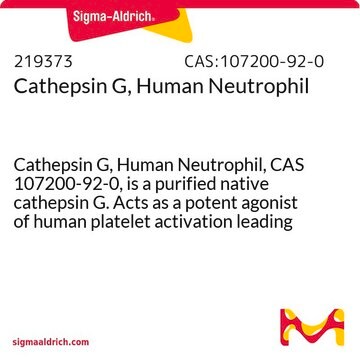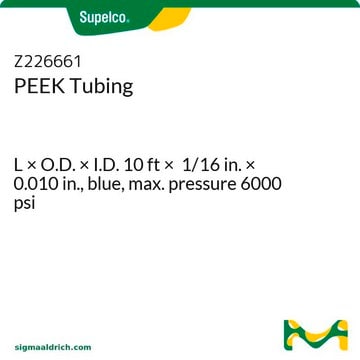一般說明
We are committed to bringing you greener alternative products, which adhere to one or more of the 12 Principles of Green Chemistry. This antibody is preservative-free, produced without the harm or sacrifice of animals and exceptionally stable to allow for ambient shipping and storage if needed, and thus aligns with "Waste Prevention", "Designing Safer Chemicals" and "Design for Energy Efficiency".
Click here for more information.
ZooMAb® antibodies represent an entirely new generation of recombinant monoclonal antibodies. Each ZooMAb® antibody is manufactured using our proprietary recombinant expression system, purified to homogeneity, and precisely dispensed to produce robust and highly reproducible lot-to-lot consistency. Only top-performing clones are released for use by researchers. Each antibody is validated for high specificity and affinity across multiple applications, including its most commonly used application. ZooMAb® antibodies are reliably available and ready to ship when you need them.
特異性
Clone 2B15 is a ZooMAb® rabbit recombinant monoclonal antibody that specifically detects Phosphatase and actin regulator 1 (PHACTR1). It targets an epitope within 23 amino acids from the N-terminal half.
免疫原
KLH-conjugated linear peptide corresponding to 23 amino acids from the N-terminal half of human Phosphatase and actin regulator 1 (PHACTR1).
應用
Quality Control Testing
Evaluated by Western Blotting in U251-MG cell lysate.
Western Blotting Analysis: A 1:1,000 dilution of this antibody detected PHACTR1 in U251-MG cell lysate.
Tested Applications
Western Blotting Analysis: A 1:1,000 dilution from a representative lot detected PHACTR1 in Human brain tissue lysate.
Immunohistochemistry (Paraffin) Analysis: A 1:1,000 dilution from a representative lot detected PHACTR1 in Human cerebral cortex tissue sections.
Immunofluorescence Analysis: A 1:1,000 dilution from a representative lot detected PHACTR1 in Human cerebral cortex tissue sections.
Immunocytochemistry Analysis: A 1:1,000 dilution from a representative lot detected PHACTR1 in HeLa cells.
Affinity Binding Assay: A representative lot of this antibody bound PHACTR1 peptide with a KD of 1.0 x 10-12in an affinity binding assay.
Note: Actual optimal working dilutions must be determined by end user as specimens, and experimental conditions may vary with the end user.
標靶描述
Phosphatase and actin regulator 1 (UniProt: Q9C0D0; also known as PHACTR1) is encoded by the PHACTR1 (also known as KIAA1733, RPEL1) gene (Gene ID: 221692) in human. PHACTR1 binds actin monomers and plays a role in multiple processes including the regulation of actin cytoskeleton dynamics, actin stress fibers formation, cell motility and survival, formation of tubules by endothelial cells. It contains four RPEL repeats, and it binds three actin monomers via the three C-terminal RPEL repeats. PHACTR1 is also involved in the regulation of cortical neuron migration and dendrite arborization. It is detected in umbilical vein endothelial cells and its levels are up-regulated by vascular endothelial growth factor A (VEGF-A). It resides mainly in cytoplasm in resting cells and is imported into the nucleus upon serum stimulation. Its nuclear localization signal resides in amino acids 108-129. Its expression is up-regulated by pro-inflammatory and pro-atherogenic agents, including TNF- , IL-1β, and oxidized LDL. Mutations in PHACTR1 gene have been linked to developmental and epileptic encephalopathy 70 (DEE70), a heterogeneous group of severe early-onset epilepsies characterized by refractory seizures, neurodevelopmental impairment, and poor prognosis. Polymorphisms in this gene are also associated with susceptibility to myocardial infarction, coronary artery disease and cervical artery dissection. Its interaction with heat shock protein A8 (HSPA8) is reported to be associated with coronary artery disease and eNOS degradation. Two isoforms of PHACTR1 have been described that are produced by alternative splicing. This ZooMAb® recombinant monoclonal antibody, generated by our propriety technology, offers significantly enhanced specificity, affinity, reproducibility, and stability over conventional monoclonals. (Ref.: Rezvan, A. (2023). Arterioscler. Thromb. Vasc. Biol. 43(8); 1409-1411; Ma, X., et al. (2022). Front. Immunol. 13; 958677; Hamada, N., et al. (2018). Brain. 141(11); 3098-3114; Jarray, R., et al. (2011). Biochimie. 93(10); 1668-1675).
外觀
Purified recombinant rabbit monoclonal antibody IgG, lyophilized in PBS with 5% Trehalose, normal appearance a coarse or translucent resin. The PBS/trehalose components in the ZooMAb formulation can have the appearance of a semi-solid (bead like gel) after lyophilization. This is a normal phenomenon. Please follow the recommended reconstitution procedure in the data sheet to dissolve the semi-solid, bead-like, gel-appearing material. The resulting antibody solution is completely stable and functional as proven by full functional testing. Contains no biocide or preservatives, such as azide, or any animal by-products. Larger pack sizes provided as multiples of 25 µL.
重構
300 µg/mL after reconstitution at 25 µL per vial. Please refer to guidance on suggested starting dilutions and/or titers per application and sample type.
儲存和穩定性
Recommend storage of lyophilized product at 2-8°C; Before reconstitution, micro-centrifuge vials briefly to spin down material to bottom of the vial; Reconstitute each vial by adding 25 µL of filtered lab grade water or PBS; Reconstituted antibodies can be stored at 2-8°C, or -20°C for long term storage. Avoid repeated freeze-thaws.
法律資訊
ZooMAb is a registered trademark of Merck KGaA, Darmstadt, Germany
免責聲明
Unless otherwise stated in our catalog or other company documentation accompanying the product(s), our products are intended for research use only and are not to be used for any other purpose, which includes but is not limited to, unauthorized commercial uses, in vitro diagnostic uses, ex vivo or in vivo therapeutic uses or any type of consumption or application to humans or animals.











